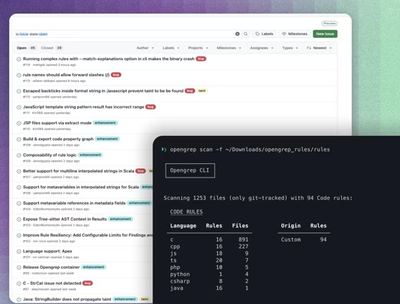
Research
Security News
Lazarus Strikes npm Again with New Wave of Malicious Packages
The Socket Research Team has discovered six new malicious npm packages linked to North Korea’s Lazarus Group, designed to steal credentials and deploy backdoors.
github.com/storyofams/next-api-decorators
// pages/api/user.ts
class User {
// GET /api/user
@Get()
async fetchUser(@Query('id') id: string) {
const user = await DB.findUserById(id);
if (!user) {
throw new NotFoundException('User not found.');
}
return user;
}
// POST /api/user
@Post()
@HttpCode(201)
async createUser(@Body(ValidationPipe) body: CreateUserDto) {
return await DB.createUser(body.email);
}
}
export default createHandler(User);
💡 Read more about validation here
export default async (req: NextApiRequest, res: NextApiResponse) => {
if (req.method === 'GET') {
const user = await DB.findUserById(req.query.id);
if (!user) {
return res.status(404).json({
statusCode: 404,
message: 'User not found'
})
}
return res.json(user);
} else if (req.method === 'POST') {
// Very primitive e-mail address validation.
if (!req.body.email || (req.body.email && !req.body.email.includes('@'))) {
return res.status(400).json({
statusCode: 400,
message: 'Invalid e-mail address.'
})
}
const user = await DB.createUser(req.body.email);
return res.status(201).json(user);
}
res.status(404).json({
statusCode: 404,
message: 'Not Found'
});
}
Building serverless functions declaratively with classes and decorators makes dealing with Next.js API routes easier and brings order and sanity to your /pages/api codebase.
The structure is heavily inspired by NestJS, which is an amazing framework for a lot of use cases. On the other hand, a separate NestJS repo for your backend can also bring unneeded overhead and complexity to projects with a smaller set of backend requirements. Combining the structure of NestJS, with the ease of use of Next.js, brings the best of both worlds for the right use case.
If you are not familiar with Next.js or NestJS and want some more information (or need to be convinced), check out the article Awesome Next.js API Routes with next-api-decorators by @tn12787
Visit https://next-api-decorators.vercel.app/docs/#installation to get started.
Refer to our docs for usage topics:
| Description | |
|---|---|
@SetHeader(name: string, value: string) | Sets a header name/value into all routes defined in the class. |
@UseMiddleware(...middlewares: Middleware[]) | Registers one or multiple middlewares for all the routes defined in the class. |
| Description | |
|---|---|
@Get(path?: string) | Marks the method as GET handler. |
@Post(path?: string) | Marks the method as POST handler. |
@Put(path?: string) | Marks the method as PUT handler. |
@Delete(path?: string) | Marks the method as DELETE handler. |
@Patch(path?: string) | Marks the method as PATCH handler. |
@SetHeader(name: string, value: string) | Sets a header name/value into the route response. |
@HttpCode(code: number) | Sets the http code in the route response. |
@UseMiddleware(...middlewares: Middleware[]) | Registers one or multiple middlewares for the handler. |
| Description | |
|---|---|
@Req() | Gets the request object. |
@Res()* | Gets the response object. |
@Body() | Gets the request body. |
@Query(key: string) | Gets a query string parameter value by key. |
@Header(name: string) | Gets a header value by name. |
@Param(key: string) | Gets a route parameter value by key. |
* Note that when you inject @Res() in a method handler you become responsible for managing the response. When doing so, you must issue some kind of response by making a call on the response object (e.g., res.json(...) or res.send(...)), or the HTTP server will hang.
FAQs
Unknown package
Did you know?

Socket for GitHub automatically highlights issues in each pull request and monitors the health of all your open source dependencies. Discover the contents of your packages and block harmful activity before you install or update your dependencies.

Research
Security News
The Socket Research Team has discovered six new malicious npm packages linked to North Korea’s Lazarus Group, designed to steal credentials and deploy backdoors.

Security News
Socket CEO Feross Aboukhadijeh discusses the open web, open source security, and how Socket tackles software supply chain attacks on The Pair Program podcast.

Security News
Opengrep continues building momentum with the alpha release of its Playground tool, demonstrating the project's rapid evolution just two months after its initial launch.